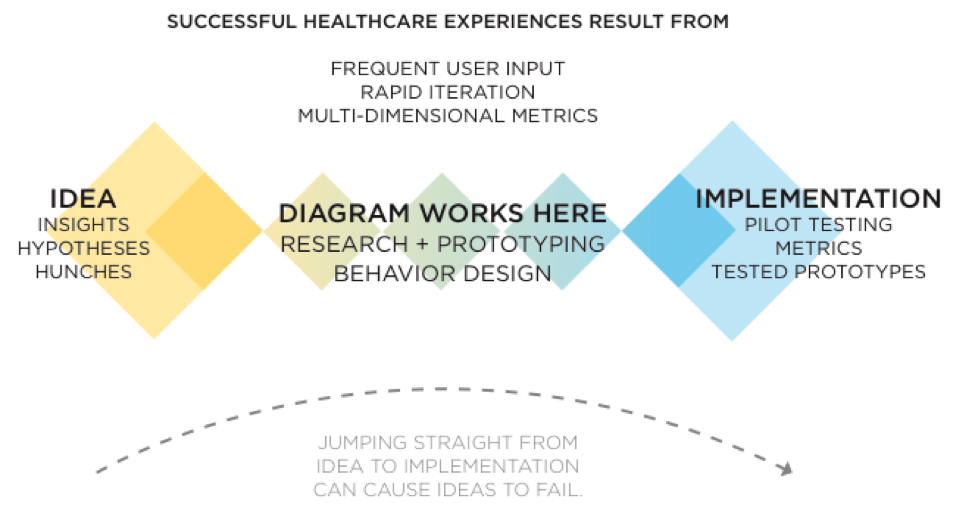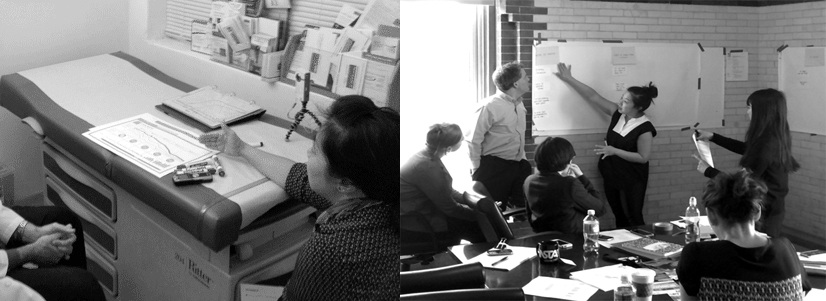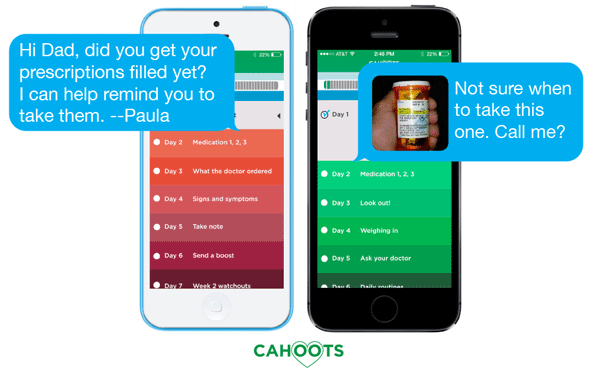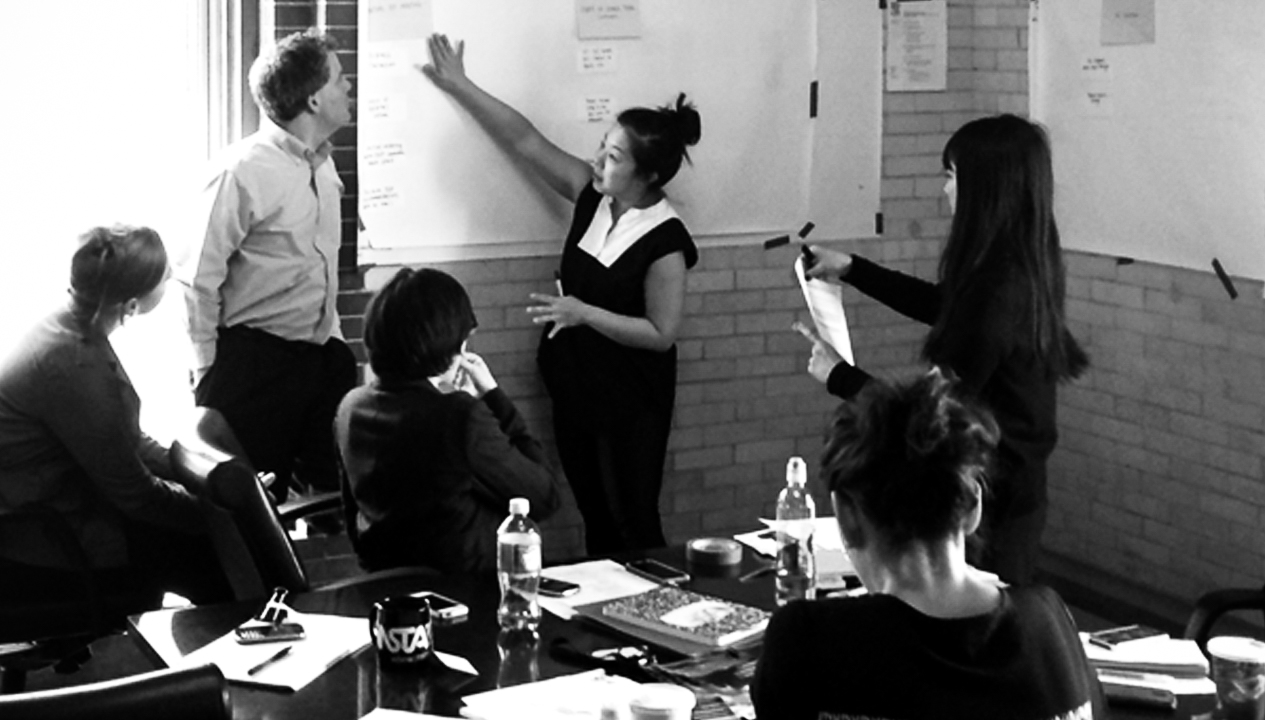Tina Park (MDP ‘06) is a partner at Diagram and also teaches thesis in The School of Visual Arts’ masters program, Design for Social Innovation. Previously Tina helped found the design research team at Johnson & Johnson’s Global Strategic Design Office. She has also held a research posts at Stanford University Hospital working on Project Health Design a grant funded by the Robert Wood Johnson Foundation and with the Palo Alto Medical Foundation on Diabetes management. Her efforts ensure the voice of the patient is heard, ultimately improving quality of life and health outcomes. Her work has been published in several journals including “Personal and Ubiquitous Computing” and the “Journal for Biomedical Informatics”. Tina holds a B.F.A. from Pratt Institute in graphic design and an M.F.A. from Art Center College of Design, where her thesis involved using objects as storytelling devices and creating environments as interface.
Miya Osaki (MDP ‘07) is a partner at Diagram. From 2007-12, Miya was Director of Experience Design at Johnson & Johnson’s Global Strategic Design Office in New York City, where she developed innovative solutions that support patients with chronic conditions such as diabetes, Alzheimer’s, cardiovascular, and chronic pain. Miya received a Red Dot design award and patents for her work. In 2006, she received a Designmatters Fellowship with UNICEF working on the One Laptop Per Child initiative. She taught at Art Center’s Media Design Program on designing technologies for the developing world. Miya is also the co-founder of the Salon Speaker Series, inspiring thinking and practices that bridge design, science and art. She lives in Brooklyn, NY.
Improving Healthcare Through Design
We started Diagram because we believe that design can change healthcare. Advancements in healthcare have brought huge opportunities and exciting innovations. However, most of us have faced less than ideal, or even frustrating, experiences with our health or the health of family and friends.
Breakthroughs in science and technology have resulted in people living longer, but this also means that chronic diseases are on the rise. One in four adults in the United States will have two or more chronic conditions such as diabetes, heart disease, and arthritis. Globally, these challenges are common and costly, but also preventable. All of us are responsible for our health and the healthcare of our loved ones. But our healthcare experiences are in desperate need of improvement. We believe that when design is at the table, early and consistently, the patient experience improves.
Diagram’s mission is to use design to improve patient engagement and outcomes. We work with hospitals, doctors, and companies at a particular moment in their product development — when an idea moves into implementation — helping them develop ideas through the eyes of a patient.
In a complex network of stakeholders, regulation, and requirements, the patient’s voice is often absent. Healthcare is complicated, and to engage patients, products and services must be simple and easy to use. Whether helping someone take a medication correctly, navigate the ER, or participate in a clinical trial, designing for patients with patients inserts a critical, though often unheard, voice into the conversation about effective products and services.

(lft) Roleplaying prototypes with physicians and patients to co-design potential solutions. (rt) Collaboration with cross-functional teams.
As students of Art Center’s graduate Media Design Department, conducting human-centered research was a catalyst for patient-centered thinking. We saw this approach as a way to truly understand the user and uncover insights. Since graduating, we’ve honed this skill and customized it to take on the challenges of a complex healthcare system. We build experience prototypes that help users build and discover as they go along, using roleplay and empathy to explore what “could be”. These prototypes are unique in that they demonstrate visually the idea to gather feedback on the idea’s value – without locking into a solution too soon – and imagine what’s possible.
Diagram consults with a variety of partners to share our design methods so that we can improve healthcare at various levels. We have worked with nonprofit organizations and educators to inspire patient-centered thinking. Accelerators and hackathons have provided us an outlet to apply a start-up mindset to healthcare. In our internal innovations group, we are currently developing Cahoots: an app to help patients in the first thirty days of recovery after a heart attack.

Cahoots – an app that allows patients to pair up with a partner, or “co-Cahooter,” to engage in a care plan.
Today, heart attacks can not only be detected earlier but can also be treated quickly and effectively. Although patients feel that they recover quickly, they may not understand that true recovery takes longer. They face challenges of adhering to medications and changing behaviors prevents putting them at risk for another heart attack. Cahoots helps patients focus on important steps in their recovery and provides more consistent, personalized support, while changing patient behavior to inspire better health choices. It provides opportunities to self-reflect, leading to insight into healthy and not-so-healthy behaviors.
Healthcare faces massive and complex challenges. We believe that designers are critical to solving them. We hope that those who are interested will join us in building a better, more empowered patient experience, and creating better health outcomes for all.
For more information about Miya and Tina’s work, visit: http://diagramoffice.com
Follow them here —-> @diagramoffice

